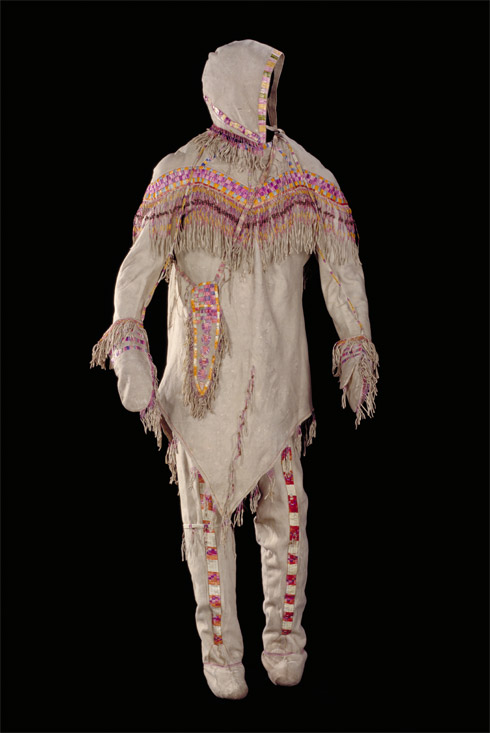About the Artifact

© Canadian Museum of Civilization, VI-I-73, Photo Richard Garner, S95-24013
“In the traditional culture, clothing like this would have served the Gwich’in very well for summer wear. It efficiently utilized a widely available resource — caribou hide — which, through skilful tanning, was transformed into a lightweight, flexible and ‘breathable’ clothing material. Individual components of an outfit were designed to fit and cover the body (thus providing protection from weather, rough terrain and stinging, biting insects) while enabling arms and legs to move freely. For example, the way in which the sleeves were cut wide at the armhole and set deeply into the side seams enabled easy movement of the arms, particularly in a forward motion. Similarly, the high sides and pointed bottom edge of the tunic allowed for unencumbered walking, while also providing the wearer with added protection from cool breezes and an extra layer to sit on. Wrist and neck openings on the tunic were small, to inhibit drafts and insects. The all-in-one fitted lower garment also offered excellent protection against insects and the elements. Soft and flexible, it was ideal for summer travel in birchbark canoes. When the sole wore out, it could be replaced without sacrificing the body of the garment.
For both maker and wearer, these summer garments would have satisfied aesthetic needs as well. Seamstresses also were artists, devoting time, skill and creative energy to the making of clothing that was beautiful as well as practical.”
— Judy Thompson and Ingrid Kritsch, 2005